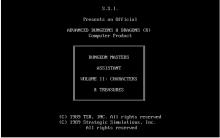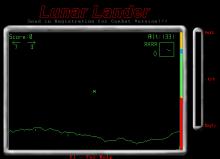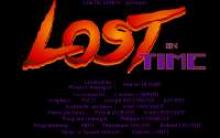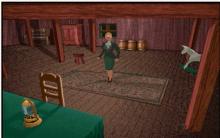Math Blaster Mystery: The Great Brain Robbery
How to play Math Blaster Mystery: The Great Brain Robbery
Each game uses different controls, Games can a combination of mouse,keyboard and Joystick.
Math Blaster Mystery: The Great Brain Robbery Description
Released in 1994, this educational game combines math challenges with a spooky point-and-click adventure. Players control Rave, a brave kid exploring Dr. Dabble’s haunted mansion. The goal is to recover Big Brain, a kidnapped genius, through exploration and problem solving. Unlike earlier Math Blaster titles, this game relies more on story than arcade action. It turns advanced math into a puzzle-driven journey for kids aged 9 and up.
A Different Kind of Math Blaster Game

This game breaks away from the space-themed action of earlier Math Blaster titles. It introduces new characters and shifts the setting to a haunted mansion. Players interact with quirky NPCs like a vampire and a Frankenbunny to solve math puzzles. The slower pace encourages exploration and deeper thinking instead of fast reflexes. It’s designed for older kids who are ready for more structured math concepts.
The Developers and Series Evolution
Davidson & Associates, a leader in 90s educational software, created the original release. They were known for quality learning games like KidWorks and Reader Rabbit. In 1998, the game was re-released as Math Blaster: Pre-Algebra with updated graphics and added content. The remake refined the mansion layout and introduced Explore and Mystery modes. These updates helped the game reach older students and classroom environments.
Gameplay Overview and Puzzle Design
Players explore a mansion filled with hidden items, locked doors, and interactive characters. Clicking on furniture, machines, or creatures triggers math mini-games. These puzzles cover skills like order of operations, fractions, decimals, and negative numbers. Completing them earns coins or access to blocked areas. The game blends exploration, collection, and math mastery in a cohesive, goal-oriented structure.
How the Game Teaches Core Math Concepts
Math puzzles are embedded naturally within the game’s setting and story. You might solve equations to unlock doors or adjust measurements to power devices. Topics range from basic arithmetic to early algebra and estimation. There’s a built-in calculator and help system for additional guidance. These features keep players learning, even when they struggle.
Memorable Characters and Mansion Setting
Each room in the mansion contains its own theme and characters. Players might meet a fish-man guarding a hallway or a ghost offering logic riddles. The non-linear layout lets you choose which areas to visit and in what order. Some items found in one room are used to unlock others. This format encourages critical thinking and backtracking, reinforcing memory and problem-solving.
Accessibility Features and Learning Tools
The game includes tools designed to support learners at various levels. A calculator can be opened anytime during puzzles to help solve equations. Players can also change difficulty settings before each mini-game. The help menu explains key math concepts when needed. These features allow children to progress without becoming frustrated or stuck.
Changes in the Pre-Algebra Remake
Math Blaster: Pre-Algebra expanded the original with two distinct gameplay modes. Explore Mode lets players roam freely and select puzzles in any order. Mystery Mode requires solving all activities before completing the final challenge. The updated graphics and room layout enhanced replayability and structure. This version helped extend the game’s relevance to middle school math.
Modern Games Inspired by The Great Brain Robbery
While no direct remake exists, many modern games carry forward its learning philosophy. Prodigy Math uses RPG mechanics to teach curriculum-based math in a fantasy world.

Adventure Academy combines open-world exploration with lessons in math, science, and reading. Puzzle apps like DragonBox use logical structures similar to Brain Robbery’s math challenges. These successors focus on engaging narratives to support real educational outcomes.
Compatibility with Modern Windows Systems
The game was built for 16-bit systems like Windows 3.x and 95, which modern systems no longer support directly. To play it today, you’ll need a virtual machine running an older Windows OS. WineVDM may work for some setups, though results vary. Once configured, the game runs well with a mouse and basic input. Setup can take time but is worth the effort for fans or educators.
Walkthrough: Mansion Progression and Puzzle Flow
The game begins with Rave outside Dr. Dabble’s eerie mansion. Players explore rooms by clicking doors, solving puzzles, and collecting hidden items. Each solved puzzle rewards coins, keys, or clues needed to advance. Some areas require specific items like fuses or codes to enter. The final goal is reaching the lab, defeating Dr. Dabble, and rescuing Big Brain.
Game Controls Breakdown
Mouse clicks are used to move between rooms and interact with puzzles. Arrow keys are useful during the final arcade sequence in the lab. The spacebar activates your goo gun when fighting Dabble’s critters. Pressing Esc opens the game menu or exits puzzles. The calculator icon appears during challenges and provides support for solving complex math problems.
Final Thoughts on Math Blaster Mystery: The Great Brain Robbery
This title remains one of the most creative math games from the 90s. It turns core math topics into story-driven exploration and critical thinking. The setting, humor, and characters make learning feel like play—not practice. Even years later, it holds up as a powerful learning experience for kids. If you enjoy retro edutainment or want a clever pre-algebra resource, this game still delivers.
Math Blaster Mystery: The Great Brain Robbery is a graphical educational point-and-click math game where the player explores the inside of a spooky mansion and interacts with the surroundings using the mouse. The goal of the game is to play math and brain puzzles and earn coins used to unlock new challenges, and to become smarter.
There is a built-in calculator to use if you get stuck and also a help section explaining the mini games.
Cheats/Hints/Walkthroughs for Math Blaster Mystery: The Great Brain Robbery
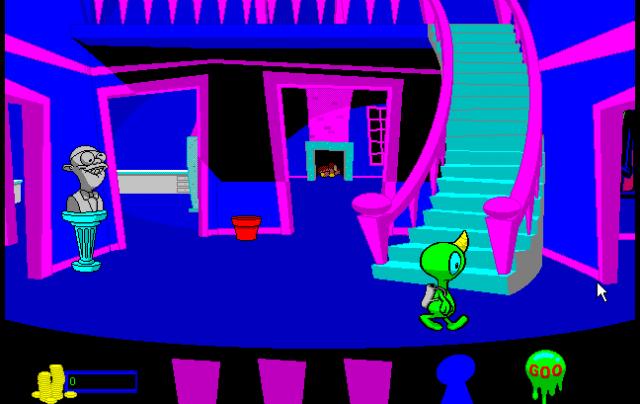
Math Blaster Mystery: The Great Brain Robbery - additional information








